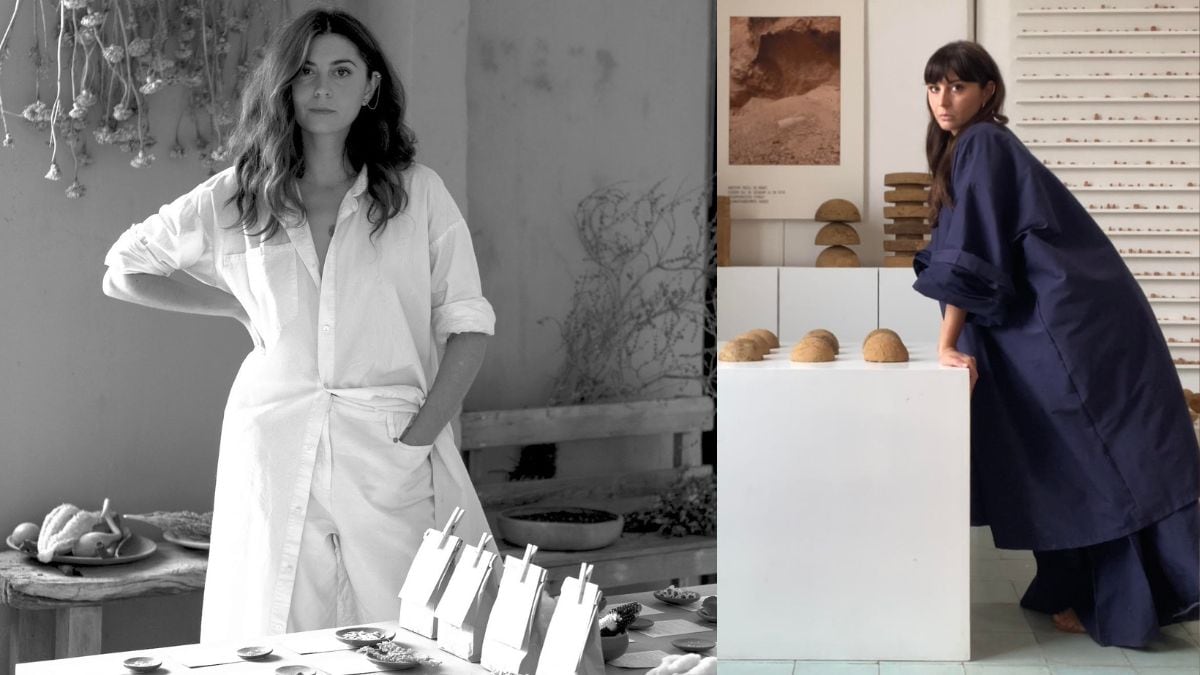The Future Will Remember explores the construction of memory in times of tragedy, challenging the increasingly digital nature of our justice landscapes with documentation in sculptural artifacts for future ancestors. A disruption to epistemicide, an entombment of truths, millennium objects for an archive of struggle. In the language of archaeology, it attempts to document aspects of current conflict to confront systems that withhold accountability or representation where history is recorded, erasure is attempted, and distortion is perpetrated.
In an EXCLUSIVE interview with Firstpost’s Lachmi Deb Roy, artist Alexis Rose explains how art can be political and the recent unrest in Palestine
Edited excerpts from the interview:
What was your thought that went behind the exhibition?
My work is often excavations of future pasts, extinct cosmic realms that didn’t decolonize in time, warning works of capitalist cosmologies. But as we began to watch fresh atrocity unfold in October, the faces of children unearthed by bare hands each morning, new ruins in real time, live events of extinction, I couldn’t generate more evacuated futures, more warnings, because we became so pregnant with them in the brutal present.
After a few weeks of witnessing the world’s first live streamed genocide, I was moved make memorial. Palestine’s Ministry of Health released the names of the first 6747 martyrs that could be counted. I printed them out and made a ceremony with them. When the denial of the death toll grew louder from my own home country, the US, I felt that printing was no longer sufficient, and there would need to be a more durable record to resist these denials. So I set about making bricks, potentially ancient objects, decamillennial artefact, and engraving their names for future ancestors to remember. I kept making them, even when I ran out of names to fill them with, just to hold a place for the relatives we hadn’t yet pulled from beneath the rubble. It was a vicarious funeral, and a way for me to resist the attempt at erasure. I was watching my own tax dollars fund.
The exhibition explores the construction of memory in times of tragedy, challenging the increasingly digital nature of our justice landscapes with documentation in sculptural artifacts. It is an attempted disruption to epistemicide, an entombment of truths, an archive of struggle. It is an archaeology of the future past, a statement about how history is recorded, erasure is attempted, and distortions are resisted.
How is art political?
I am reminded of Paul Robeson’s assertion that artists are the gatekeepers of truth, civilization’s radical voice. Or Art Spiegelman’s words, that history is far too important to leave solely to the historians.
We stand now as witnesses of a historical, world shifting violence, and how we remember it is very important. How do we honor our witnessing, the commitment to protect truth from being twisted by time, how are we prompted to scribble evidence, engrave, entomb, weave, archive, translate, record, screenshot, replay, stitch and plaster our witnessing? Where do we guard our artifacts, how do we proliferate our evidence, how can we help the future to know, to remember, what to hold dear, what not to repeat, who to hold to account.
The show explores the work of witnessing, archiving in real time, justice work that resists what we know to be the inevitable memoricide and epistemicide that accompanies settler colonial oppression and violence, with catalogues of uneditable complex truths. We reimburse the witness with urgency to cultivate their own archival proliferations, to texture any potential for “histories written by victors”, with the knowledge of our collective experiences and observations, the evidence of our witnessing. The space we are holding in the show is a gathering of relatives lost and stories of survivors in progress, to illuminate the pending justices and the social records of representation.
What were the challenges that you faced?
Part of the challenge we face as witnesses is in durabilizing our accountability processes as we work toward just futures. As censorship and algorithm dynamics emerged on social media, disadvantaging the content of Palestinian voices, we were reminded that the digital space was delectable, bankable, biased and battered, and for the voices of the oppressed to be heard as loudly as possible, we needed to preserve them away from our devices too, in forms that last past us, so there can be no forgetting, no erasure, no silence.
Within the historically unique geo-political context of a live-streamed genocide, and the evidentiary proliferation that occurred digitally as a result of it, our engagement was challenged in real time, as was our ability to preserve and persevere. We as witnesses of great violence are challenged to catalogue the injustices suffered in a digital era into age compatible artefact, objects of just memory, encoded quilts and stones of data, to face these attempted erasures.
Your views on the recent unrest in Palestine…
My home country, the US, was founded on the genocide of native peoples. To watch the same great harm unfold again, with contemporary weapons, biases and agendas, subsidized by my own tax dollars, creates a deep colonial shame inside me. I am ashamed that my labor has been translated into violence, that I have been made an unconsenting colluder in this vast injustice.
But Palestinian struggle shows us too what care culture looks like in times of unfathomable struggle, illuminating the networks of mutual aid, creative communication, brave documentation, and survival innovation that the Palestinian community has cultivated internally and globally. I am taught everyday by the kindness, generosity, perseverance and hope of the
Palestinian community, and the diversity of their movement, as they inform and anchor my own imagining of regenerative liberatory futures.
Witnessing this attempted genocide of the Palestinian people illuminates the systemic mechanisms of our collective oppressions, and emphasizes our task as artists and activists to imaginatively transform the conditions of state violence towards futures for the living.

